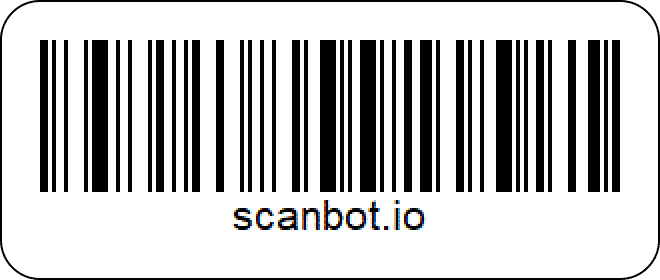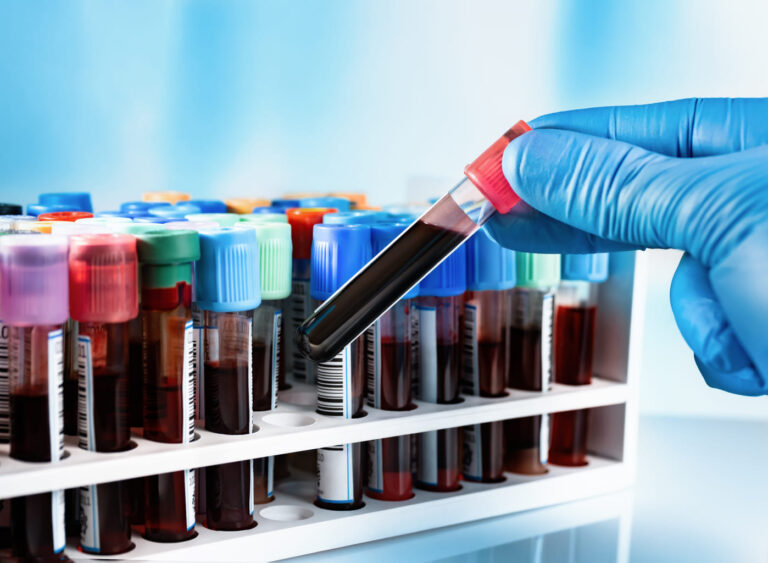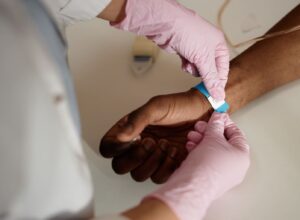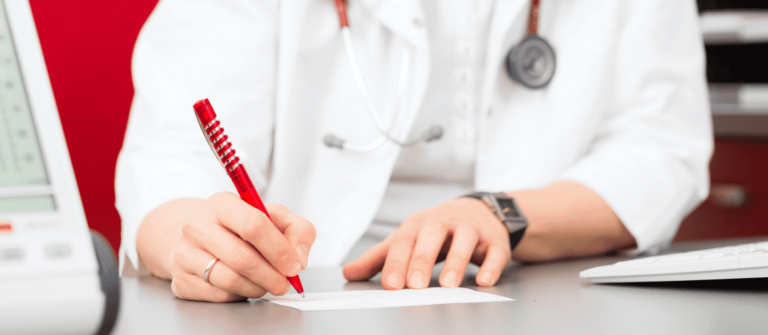Laboratory diagnostics plays a vital role in diagnosing and treating patients. Analyzing human tissue or fluid lab specimens gives valuable insights into a patient’s health status. That is, as long as they are correctly tracked. To prevent sample loss and mix-ups, accurate patient identification and lab specimen labeling are paramount.
Human errors happen quickly in the fast-paced environment of healthcare – sometimes with dire consequences. When lab specimens are mislabeled, they can get mixed up or can’t be attributed to a patient at all. This results in incorrect and delayed treatment or none at all, and causes serious harm to patient health, prolonging hospital stays and raising healthcare costs.
Thus, accurate identification and matching of lab samples and patients is crucial for safe procedures.
This article explores how to use barcode technology in lab specimen labeling to ensure compliance with safety standards, and what to consider when implementing such a system.
Lab specimen labeling standards
Lab specimen labeling standards provide guidance for hospitals, laboratories, and other healthcare institutions that want to use a barcode specimen label system to address the issue of mislabeled specimens.
The Clinical and Laboratory Standards Institute’s CLSI AUTO12-A standard describes practices to achieve higher quality reporting, faster results, and improved patient care.
AUTO12-A states that every lab specimen should have a label – preferably 2 × 1 inches large – with certain human-readable information in certain locations. The five main elements are:
- the patient name (truncated only if unavoidable)
- a unique identifier (e.g., an alphanumeric code)
- the date of birth
- the specimen collection time and date
- the collector’s identification
It also specifies the size and location of a label’s barcode.
The Joint Commission, an internationally operating nonprofit organization based in the U.S., also defines standards of patient care. It has established specific guidelines for laboratory specimen labeling to ensure patient safety and prevent errors.
Its guidelines prescribe these key best practices:
- usage of two patient-specific identifiers on specimen labels, such as the patient’s full legal name, date of birth, or assigned identification number
- labeling specimens with the two identifiers in the presence of the patient
- no pre-labeling
Enhance patient safety with lab specimen barcode labels
The 2012 meta-analysis “Effectiveness of Barcoding for Reducing Patient Specimen and Laboratory Testing Identification Errors” concludes that barcode technology for specimen labeling reduces identification errors. To improve accuracy of patient specimen identification in hospitals, the authors recommend using barcodes as a best practice in these settings.
With barcodes, lab specimen labels receive a unique digital fingerprint that ensures the traceability and uniqueness of each sample within a clinical lab’s workflow.
Barcodes can encode numeric or alphanumeric data. As identifiers, they can be linked to digital records, online resources, and detailed sample information. When combined with human-readable text, they are a reliable verification method.
Suitable barcode types
Several types of barcodes are suitable for use on lab specimen labels. To choose a symbology for implementation, consider label size, space, as well as the type and amount of data you need to encode. While 1D barcodes are simpler and useful for basic identification, 2D barcodes offer higher data capacity and are better suited for more complex applications.
The most common symbologies for specimen labeling are Code 128, QR Code, and Data Matrix.
Code 128 is a high-density 1D barcode that can encode a large set of characters. Widely supported and capable of encoding details beyond a simple ID number, it is commonly used for sample identification and tracking.

QR Code and Data Matrix are suitable 2D barcode candidates.
QR Codes are known for storing a wide range of data, including URLs, text, and binary data. They are frequently used to link directly to digital records and online sources..

Similar to QR Codes, Data Matrix codes can store a significant amount of data, with the added advantage that they require less space, making them a better fit on lab specimen vials.

Suitable barcode technology options
Barcode technology doesn’t have to be bulky or very costly. Today, portable barcode printers enable hospital and laboratory staff to generate and print specimen barcode labels right at the point of collection, the basis for a lab specimen label system that is compliant with patient safety standards.
High-quality barcode scanner software turns smartphones and tablets into reliable barcode readers. Unlike the costly dedicated hardware they replace, the smart devices can also be used for multiple purposes – including communication and access to a lab or hospital management system – all in one device.
Suitable barcode scanner software does have to meet the specific demands of healthcare settings. The barcodes on lab specimen labels are often tiny, and scanning them has to be fast and user-friendly in order to handle high volumes. Since the label data includes sensitive patient information, the label scanner solution must comply with the applicable data privacy regulation, such as HIPAA, CCPA, or GDPR.
The Scanbot Barcode Scanner SDK meets these requirements. Moreover, thanks to our flat pricing model, it can be integrated into any mobile or web app to be run on as many devices as needed. It scans and processes barcodes locally without connecting to third-party servers, ensuring the security of sensitive data.With our free demo app, you can try the SDK’s ability to scan even tiny, damaged, or poorly lit barcodes. Contact us at sdk@scanbot.io to learn more.



